Up close with Stonehenge’s little-known older sibling on underrated trail
It’s barely light when I creep out of my B&B before breakfast. Crossing a narrow country lane, I open a gate and stroll into a field glistening with dew. Shrouded in early-morning mist, an arc of misshapen monoliths stand silent and still like tombstones. I walk over to the nearest one, a four-metre-high shard of jagged sandstone, and gently place my hand on it. For a few seconds, there’s a moment of stillness and connection that’s hard to describe.
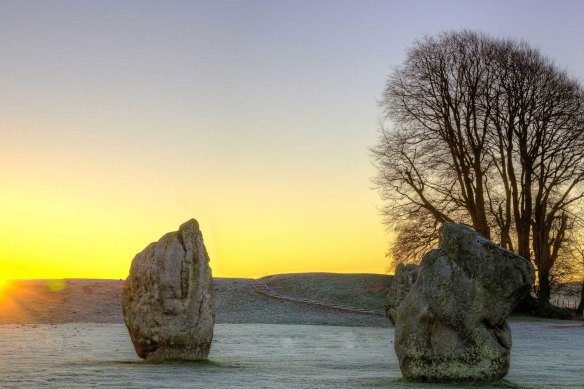
Three Neolithic stone circles that are thought to date back to the 3rd millennium BC surround Avebury.Credit: Visit Wiltshire / Nick Smith
Surrounding the small English village of Avebury in Wiltshire are three Neolithic stone circles that are thought to date back to the third millennium BC (the years 3000 to 2001 BC). And unlike their better-known sibling at Stonehenge (38 kilometres south), they’re not roped off, so you can touch the rough-hewn handiwork of Stone Age artisans.
But here’s the thing. Despite growing up in the UK, I’d never heard of Avebury, and yet it’s one of Britain’s greatest prehistoric marvels – part of an ancient UNESCO World Heritage-listed landscape that also contains Silbury Hill, a mysterious 30-metre-high artificial chalk mound that’s thought to be the largest in Europe, and West Kennet Long Barrow, one of Britain’s largest Neolithic chambered tombs.
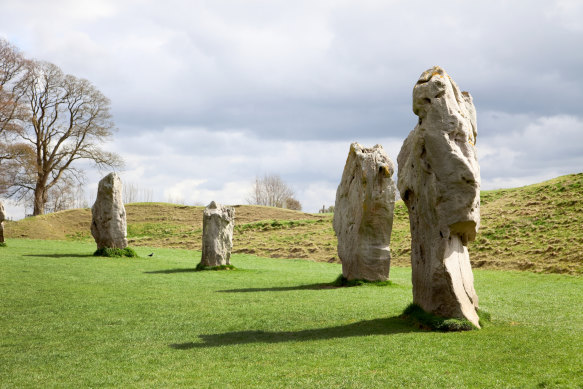
The stone circle is not roped off, which means you can touch the stones.Credit: iStock
Sites like Avebury are one of the reasons behind The Great West Way (GWW), a 200-kilometre touring route between London and Bristol that hopes to encourage people to venture outside the cities and explore some of the lesser-known gems in between. Claiming to be the UK’s first “multi-modal” touring route (meaning you can tackle it by car, bike, foot, train or even canal boat), it’s an overlapping network of trails, roads and waterways that encompasses three UNESCO World Heritage Sites, three Areas of Outstanding Natural Beauty, seven National Trust properties and a bucket-list of iconic destinations including Windsor Castle, Hampton Court Palace, Stonehenge and Bath.
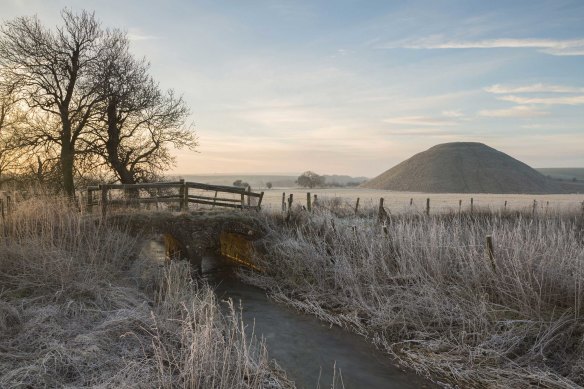
The mysterious Silbury Hill is regarded as the largest artificial chalk mound in Europe.Credit: Visit Wiltshire / Nick Smith
I’ve chosen to tackle it by two wheels and thanks to specialist operator Compass Holidays have a nifty black e-bike, two panniers for my belongings and a GPS phone app to help guide me from the centre of London to the heart of Bristol over six days.
Doing justice to a trip like this in one story is a bit like trying to summarise Game of Thrones on a Post-it Note. So, here are the highlights, some expected, others – like Avebury – a delightful surprise.
Stately pads
I can only assume the Royals don’t cycle. Visiting Windsor Castle with a bike is – to put it mildly – challenging. The closest bike rack is at Windsor train station and the only place within the castle grounds to store my panniers is a 10-minute walk uphill. But it turns out to be a blessing. Because from then on, I eschew the well-known historic homes along the route and focus on the less-trumpeted ones instead. Of which, there are plenty.
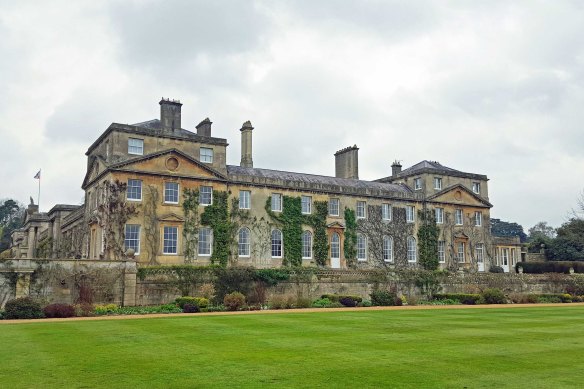
Owned by the Marquess of Lansdowne, Bowood House features 40 hectares of manicured parkland.Credit: Visit Wiltshire / Nick Smith
Located eight kilometres south of the market town of Chippenham, Lacock Abbey is an intriguing mish-mash of medieval, Tudor and Victorian architecture. Founded in 1232 by one of the Middle Ages’ most influential women, Ela, Countess of Salisbury, its atmospheric cloisters have featured in Downton Abbey and the Harry Potter movies. It’s also where William Fox Talbot captured the first photographic negative in 1835 and there’s an interesting museum devoted to his exploits.
Nearby Bowood House is equally entrancing – a striking Grade I listed Georgian country pile owned by the Marquess of Lansdowne. Its magnificent 40-hectare Capability Brown-designed parkland, complete with hidden waterfall and lakeside Doric temple, prove to be the ideal setting for a restorative afternoon tea.
Twin cities
It kind of goes without saying that Bath is a highlight. Thanks to its sweeping crescents of Georgian townhouses, immaculately preserved Roman bathhouse and tranquil setting on the River Avon, it’s a compelling contender for Britain’s most attractive city.
UNESCO clearly thought so given it’s the only UK city that’s also a World Heritage site. I can attest to the leg-soothing properties of the city’s mineral-rich hot springs, which can be enjoyed at the swish, six-level Thermae Bath Spa. I’d also recommend a visit to No. 1 Royal Crescent, a restored townhouse museum that provides an immersive insight into 18th-century Georgian life.
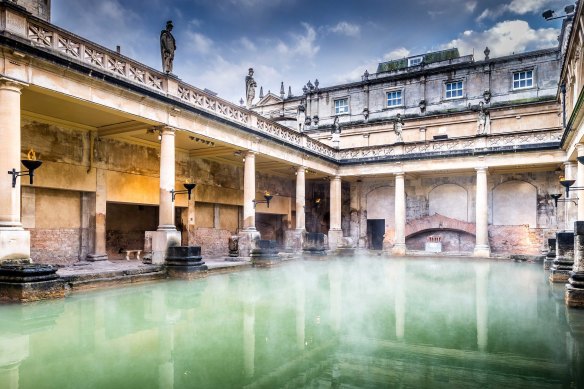
Bath stands out with its impressively preserved Roman bathhouses.Credit: Visit Wiltshire / Nick Smith
What nearby Bristol lacks in Roman history and Georgian splendour, it makes up for with industrial heritage, vibrant street art and youthful exuberance. While my afternoon in Bath is spent strolling, bathing and daydreaming, in Bristol I scale the rigging of the SS Great Britain, scour a council estate for Banksy artworks and join an impromptu alfresco dance party on the docks.
Coincidentally, the two cities are linked by a 21-kilometre cycle trail that was the first section of the UK’s National Cycle Network, a scheme that has created more than 20,000 kilometres of signposted cycleways. Ironically, because it follows a flat and mostly tree-lined disused railway, it’s one of the least scenic parts of the GWW. Thankfully, other sections more than pick up the slack.
Parish pleasures
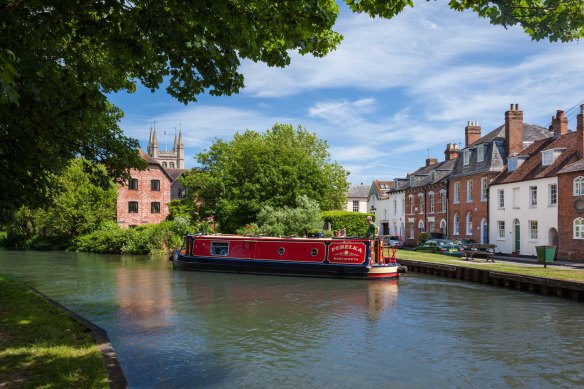
Kennet and Avon Canal at Newbury: the trail takes you to both big cities and small English villages.Credit: Visit Wiltshire / Nick Smith
The advantage of tackling the GWW by bike is that you not only get to explore the major cities, but also some of the quintessentially English towns and villages in between. Like Marlborough, a pretty market town whose broad high street is lined with former 16th-century coaching inns and timber-framed merchant houses. Or Cherhill, a tranquil village of thatched cottages near the Cherhill White Horse, one of several striking horse-shaped figures cut into the surrounding chalk hillsides.
My favourite stop is Bray, a sleepy village on the banks of the River Thames with an impressive 13th-century flint church. Remarkably, it’s home to two three-Michelin-starred restaurants: Heston Blumenthal’s famously experimental Fat Duck and Alain Roux’s homage to haute cuisine, The Waterside Inn.
In need of a mid-morning caffeine fix, I call into The Waterside Inn to see if I can get a Michelin-starred latte in my reusable cup. To the receptionist’s credit, she manages to hide her disdain of the challengingly pungent, Lycra-clad cyclist before her. “I’m sorry sir,” she says kindly, “we don’t sell takeaway coffee.”
Two-wheeled fun
Despite the profusion of bucket-list attractions along the way, my favourite part of the trip is the cycling itself, which is a joyously varied romp through some of England’s prettiest countryside. One minute I’m cruising along a Thames-side canal path, pootling past swans, narrowboats and lavish riverside mansions, the next I’m freewheeling down a deserted country lane, butterflies dancing among the hedgerows.
Inevitably, there’s the odd industrial park and housing estate to navigate, but that’s soon forgotten when I plunge into a cool, dense forest of ancient oaks or skirt a stubbled wheat field dusted with poppies.
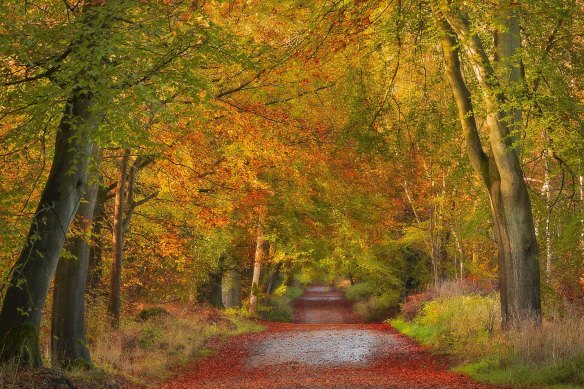
Savernake Forest in autumn: landscapes switch from canals, to fields of poppies and dense forest.Credit: Visit Wiltshire / Nick Smith
If I were to do it again, I’d tackle it in reverse. Finishing in London would be a more momentous climax than Bristol, where the route just peters out near the harbour. Plus, it’d save the most challenging part – navigating London’s hair-greying traffic – until the end. I’d also use the luggage transfer service as the panniers were unwieldy and not conducive to sightseeing.
Alternatively, I might choose another mode of transport altogether. Train perhaps? Or canal boat? Each would have its own unique appeal and allure. And it’d be nice not to have to wash my cycling shorts in the bathroom sink every night. Who knows, maybe they’d even let me into The Waterside Inn…
FIVE MORE EPIC BRITISH RIDES
Land’s End to John O’Groats
The ultimate UK cross-country cycle – a 1900-kilometre, two-week trip from the tip of Cornwall to Scotland’s northeast extremity.
Way of the Roses
A popular alternative to the classic Coast to Coast, this 273-kilometre route crosses the majestic Yorkshire Dales as it meanders from Morecambe in Lancashire to Bridlington in Yorkshire.
South Downs Way
Weaving its way for 160 kilometres over the chalky ridges of the South Downs in Hampshire and Sussex, this largely off-road track is the only National Trail entirely accessible by bike.
Devon Coast to Coast
A splendidly varied 159-kilometre romp across Devon that skirts Dartmoor National Park on its way from Ilfracombe to the historic port of Plymouth.
Hadrian’s Cycleway
Another popular coast-to-coast trip, this 273-kilometre trail follows Hadrian’s Wall from Ravenglass in Cumbria to South Shields in Tyne & Wear.
THE DETAILS
Cycle
Compass Holidays can organise bike hire, accommodation and transfers. For a six-day trip including e-bike hire, B&B accommodation, luggage transfers and a detailed tour pack including paper maps and a GPS smartphone app, prices start at £1525 ($2950) a person (twin share). See compass-holidays.com
More
The writer was a guest of Compass Holidays, Visit Wiltshire and Visit Britain.
Sign up for the Traveller Deals newsletter
Get exclusive travel deals delivered straight to your inbox. Sign up now.